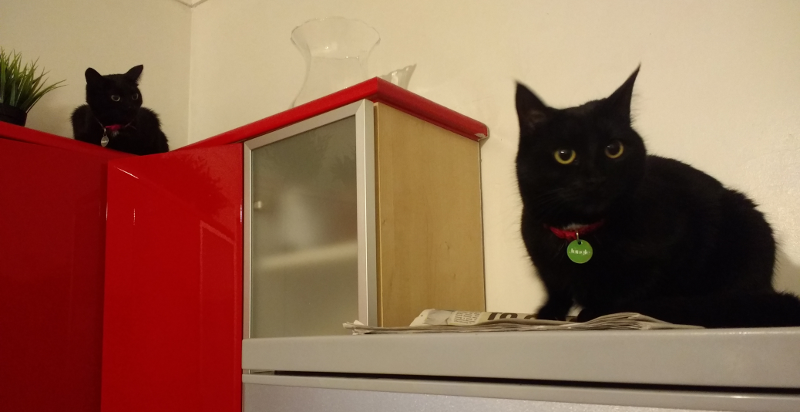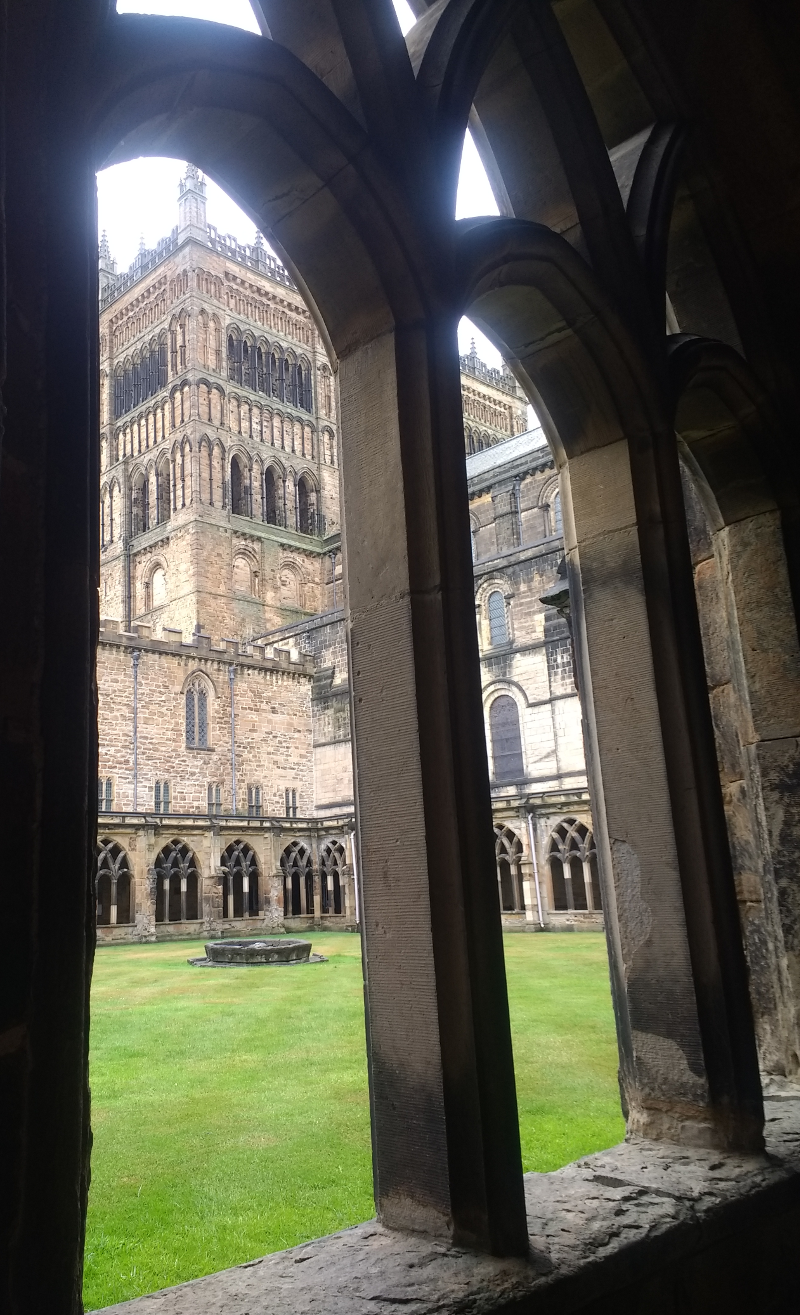Average Birding

Dixons, Cats, Durham and Children
An only mildly delayed train to Newcastle sees us arrive at the Dixons' for just after half past ten on the Friday.
Pronoun guidance: AB1 predicts faff is proportional to the number of children. This post covers the events of 28-29th July, 2018.
A speedy escape
In the house also are the family Eccles; the smallest of whom is thankfully fast asleep. We all celebrate this fact with a quiet glass of wine. Tomorrow, the Ashforths arrive (with another small child) and social events (and, I predict, unbelievable levels of faff) will occur.
Having seen several editions of "spending the morning with your friends and their ~2 year old" and also having found an interesting possibility of a tick a short Metro journey away, Saturday morning finds me exiting house Dixon like a shot. I'll catch up with everyone once the Ashforths have arrived and everyone has got organised.
East Boldon Flats
Within an hour, I'm already at the most salubrious location of East Boldon. Nearby, at East Boldon Flats, there's been a report of three Wood Sandpiper. This is, without question, the least glamorous place I am likely to bird this year. The exit to the Metro station is guarded by an average looking pub and some low density commercial buildings. A pizza place hiding within it looks cheerful, mind.
The walk to the flats is equally unappealing, there are no pavements and a grass verge of only limited width, next to an A-road with national speed limits (60mph). It's also starting to rain, and the signs are that it's going to really cane it down in an hour or so. I hope the waterproof I've borrowed from Dixon holds up.
The reserve itself is almost totally inaccessible and can only be viewed from a pair of laybys. There are two cars parked in one of them; a couple next to the nearest one have set up a telescope. I can see evidence of someone trying to scope from inside the second car (an admirable but nigh on impossible feat).
I don't immediately feel like asking for assistance - having reached the arbitrary 200, I can afford to dip a few species in the name of becoming a better birder. One would hope that the sheer worthiness of venturing out to this unfriendly place in such miserable weather is already helping on that front.
The site itself is a shallow watercourse that's probably a couple of hundred metres square. It has extensive muddy edges that look excellent for waders. I'm going to need these sandpipers to be on one of the nearer shores, but ideally on the right or left edge, as the front is obscured by foliage. There are the usual Lapwings and Redshanks poking about (occasionally the Lapwings misidentify a fly as a raptor and, en masse, take to the sky, protesting noisily). I wonder if Lapwings are mostly becoming red listed just by being the thickest birds on the scrape.
A few minutes of searching and I can happily rule out the areas I can easily see. Humph. Ok, time to try the front edge - perhaps something will gambol far enough out to be identified.
A Redshank does make a brief foray out of the undergrowth, with some friends. The friends are smaller. Interesting. They make their way left until, after some time. I can see that their legs are in no way red; they are perhaps a yellowy colour. As I look more, the hallmarks of Wood Sandpiper start to become clearer - the gently speckled chest, the supercilium. Not pale enough for Green Sandpiper, no armpits (so not Common Sandpiper), too small and again, not pale enough for Greenshank. Also, there are three of them, which matches the BirdGuides report. Wood Sandpiper they are!
This is an excellent turn up for the books, and a well-timed one too, because the rain now arrives big style. I shelter under a ridiculously small (yet strangely effective) bush until we're back to drizzle rather than downpour, and then head back to the Metro station. I check my phone to see if the child-bearing party has got its boots on, and find an empty WhatsApp. I end up having enough time in the town centre to run a couple of errands before everyone else arrives. A delightful day of museums, sitting about and chatting follows.

A trip down memory lane
The next day, it is decided that the group is going to Durham. Precisely what will happen there is left ill-defined. To a point where, as the car with us arrives in it, we decide to disrupt the plan and go on a walk around the city centre rather than visiting the effective garden centre the forward party decided to head to. This, remarkably, turns out alright - the garden centre crew have a jolly time there, and we get to walk up the Bailey and give the cathedral a bit of a walk around.

This is only the second time I've been back to Durham since graduating, and walking the Bailey triggers some strong muscle memories. On these cobbles a wallet flew out of my coat as I sprinted back to my room - why was I sprinting? Who knows. I'm sure it wasn't warranted. A pretty girl in my year picks it up and returns it to me with a smile as I sprint back up; I accept it and flee, in fear that it's a precursor to giggling.
More cobbles. Another memory, clearer this time, "don't rush here, you'll fall over". Hmm, it is rather a soggy day, and those cobbles do look very slippery - just how many times did I fall over here to make that such a clear warning? The concrete bunker of the DSU hoves into view, and my mind's eye replays a poorly-attended Biffy Clyro gig and some effort to obtain some terrible Smirnoff merchandise. Oh dear. Wasn't there a Peters' bakery over there once? And didn't we try to steal that sign one evening? Hmm.
We head to the Court Inn for a late lunch - much wrangling with smalls follows, but some adult conversation is just about maintained.
A last minute adventure
Eventually, we say goodbye to both Eccleses and Ashforths, and are left in Durham with the Dixons. Who, it happens, are ripe for a bit of adventure before our train, which I can happily provide, in the form of a quest to Blackhall Rocks, on the coast. Why? Well, there's a raft of a few hundred scoters there, and, amongst them are both Velvet and Surf Scoters, both of which would be life ticks.
Having convinced everyone this is an amazing plan, I'm now somewhat tense. I don't have a scope, and I suspect I am going to need one. I also have little idea of where we're going once we get there. I am hoping there are going to be other birders to make it clear.
There are plenty of other birders. And, handily, my compatriots are less fussed about identification than I am, after a bit of ribbing, the Dixons disappear off to a nearby bit of beach, having realised this is serious business. We're on top of a short cliff, perhaps twenty metres above sea level. The scoter raft is perhaps a couple of hundred metres out.
It's the biggest raft I've ever seen - easily three hundred birds, perhaps four with the little flotillas disjoint from the main group. In them we're going to need to find two or three that have slightly different plumage and head shape. I tune my ears into the chat of the seven or eight birders with scopes perched on the top to try to reduce the area I need to look in.
This is a struggle - the top of this cliff is windy, and the differences we're looking for are small. The Surf Scoter has a maniacal-looking pattern of colours on its bill and a couple of white patches on its head. The Velvet cousin has a white 'wink' of an eyepatch, and a white patch on its flank. We're looking for two of the latter, and one of the former.
My eyes are watering with the strain of focussing on these birds; just as with the Wood Sandpipers, they're right at the edge of what can be reasonably looked at. That said, I'm pretty confident I've found the Surf Scoter - it's at the left-hand side of the largest group. One of the 'scope wielders takes pity on me - "I've got it, have a look". A thousand thank yous from both of my eyes. I was right though - that is the Surf Scoter. I yield the eyepiece to AB2 and make gracious noises. The other birders also offer up their scopes - we've definitely landed amongst a most charitable group; we must have passed some regional hazing test by being prepared to stare for so long with just binoculars.
Confidence restored by the confirmation of the Surf, I'm energised to try and find the Velvets with the bins as well. Heh, and, you know what, I can - they're actually not far from the Surf - although describing this precisely is challenging. It's quite remarkable how clearly they show up once you've found them - the eye is clear once you've picked out the flank/wing pattern.
We'd better go and find the Dixons - they'll surely be making trouble wherever they are. Indeed. Mr Dixon is finding large rocks and flinging them at the sea on a nearby shingly beach. That Geology degree was worth every penny. Some further scoters are lounging nearby - it's quite remarkable how close in some of the subrafts are - this is easily the best view I've ever had of them. We mess about on the beach for a while longer, leave once, return to find Kate's phone, and then it's back to Newcastle (and, for us, London).
July ends. 203 is the count. A gentle August will surely follow.